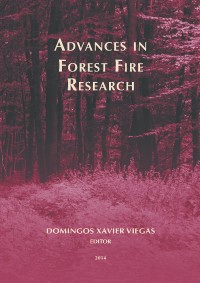Please use this identifier to cite or link to this item:
https://hdl.handle.net/10316.2/34284| DC Field | Value | Language |
|---|---|---|
| dc.contributor.author | Dicus, Christopher A. | |
| dc.contributor.author | Leyshon, Nicola C. | |
| dc.contributor.author | Sapsis, David B. | |
| dc.date.accessioned | 2014-10-23T16:29:22Z | |
| dc.date.accessioned | 2020-09-09T21:31:12Z | - |
| dc.date.available | 2014-10-23T16:29:22Z | |
| dc.date.available | 2020-09-09T21:31:12Z | - |
| dc.date.issued | 2014 | - |
| dc.identifier.isbn | 978-989-26-0884-6 | |
| dc.identifier.uri | https://hdl.handle.net/10316.2/34284 | - |
| dc.description.abstract | To aid policy development that reduces fire losses in the wildland-urban interface, we are evaluating changes to risk through time in dissimilar communities that are expanding into fire-prone areas of southern California, USA. Conventional wisdom states that escalating losses are caused, in part, by an expansion of residential development into fire-prone areas. However, various mitigation strategies such as defensible space and improved construction standards have recently been mandated for new developments in California so as to reduce the risk of these losses. Subsequently, older high-risk communities may actually become buffered from wildfires as the WUI expands and subsequently lessens their exposure to flames and embers. Thus, expanding WUI may either increase or decrease risk of residential loss dependent upon the extent of altered fire exposure and the application of mandated mitigation strategies. To help elucidate this seeming dichotomy, we are utilizing various GIS strategies to spatially analyze changes to development and subsequent risk of structural ignitions through time in three expanding, but demographically dissimilar, residential communities in southern California. Here, we quantify temporal changes in the area exposed to fire hazards in each of the communities over a 26-year period. The amount of area exposed to wildfire increased in each of the communities. The degree and location of newly exposed development, however, differed between communities, which may influence fire risk in an impending assessment we will conduct as part of a larger research project of the area. | eng |
| dc.language.iso | eng | - |
| dc.publisher | Imprensa da Universidade de Coimbra | por |
| dc.relation.ispartof | http://hdl.handle.net/10316.2/34013 | por |
| dc.rights | open access | - |
| dc.subject | Wildland Urban Interface | eng |
| dc.subject | Land Use | eng |
| dc.subject | Urban Expansion | eng |
| dc.subject | Wildfire | eng |
| dc.subject | Risk | eng |
| dc.subject | Urban Resiliency | eng |
| dc.subject | San Diego County | eng |
| dc.title | Temporal changes to fire risk in Disparate WUI communities in Southern California, USA | por |
| dc.type | bookPart | por |
| uc.publication.firstPage | 969 | - |
| uc.publication.lastPage | 978 | - |
| uc.publication.location | Coimbra | por |
| dc.identifier.doi | 10.14195/978-989-26-0884-6_105 | - |
| uc.publication.section | Chapter 3 - Fire Management | por |
| uc.publication.digCollection | PB | por |
| uc.publication.orderno | 105 | - |
| uc.publication.area | Ciências da Engenharia e Tecnologias | por |
| uc.publication.bookTitle | Advances in forest fire research | - |
| uc.publication.manifest | https://dl.uc.pt/json/iiif/10316.2/34284/211299/manifest?manifest=/json/iiif/10316.2/34284/211299/manifest | - |
| uc.publication.thumbnail | https://dl.uc.pt/retrieve/11172106 | - |
| uc.publication.parentItemId | 53868 | - |
| uc.itemId | 70264 | - |
| item.grantfulltext | open | - |
| item.fulltext | With Fulltext | - |
| Appears in Collections: | Advances in forest fire research | |
Files in This Item:
| File | Description | Size | Format | |
|---|---|---|---|---|
| 978-989-26-0884-6_105.pdf | 2.07 MB | Adobe PDF |  |
Items in DSpace are protected by copyright, with all rights reserved, unless otherwise indicated.
